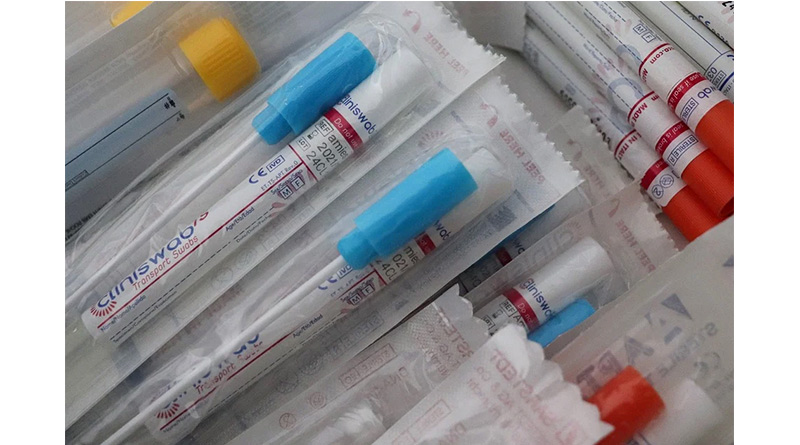Designated Settings For COVID-19 Patients Leaving Hospital
The CQC is working with the Department of Health and Social Care (DHSC), local authorities and individual care providers to provide assurance of safe and high-quality care in designated settings, which are part of a scheme to allow people with a COVID-positive test result to be discharged safely from hospitals.
These settings are admitting people who are discharged from hospital with a COVID-positive test who will be moving or going back into a care home setting. This is to help prevent the spread of COVID-19 (coronavirus) in care homes and will allow for a focus on the care that people who have contracted COVID-19 need. The Government’s aim is for each local authority to have access to at least one designated setting as soon as possible, CQC is working closely with the Department of Health and Social Care to ensure social care designated settings are appropriate.
In order to do this, the CQC are using our Infection Prevention Control (IPC) framework which is being used on all care home inspections. For inspections of designated setting services, there are specific elements we are checking for in the environment to ensure infection control can be maintained. This means that there will be checks to see if services are physically separating this group of residents, whether a dedicated workforce is in place and ensuring there’s an appropriate emphasis on ventilation.
The CQC say they are inspecting care locations against eight areas and reporting with ‘eight ticks’ on infection prevention control which will give the public an overview including on whether:
- Adequate PPE is available for staff and residents to control infection safely
- Staff are properly trained to deal with outbreaks and the proper procedures are in place
- Shielding and social distancing are being complied with
- Layout of premises, use of space and hygiene practice promote safety.
Kate Terroni, Chief Inspector of Adult Social Care at CQC, said: “It is our role to ensure that proposed locations for the designated scheme, which is an initiative led by DHSC, meet the IPC standards expected for people with a confirmed COVID-19 test result to be discharged into.
“Since October, we have completed well over 500 infection prevention and control inspections including approved designated locations and measured against ‘eight ticks’ which are published on our website. We will continue to work with the Department of Health and Social Care, local authorities and care providers to ensure that all locations participating in the scheme are able to provide the high-quality care that people leaving hospital will need.”
The Department of Health and Social Care have asked local authorities to speak to local care providers and find suitable designated locations where people that have tested positive for COVID-19 may be safely discharged to. Once these locations have been identified, they contact CQC and we go out and assess the location with an IPC inspection and a specific focus on a service’s ability to zone COVID-19 positive residents with a dedicated workforce and high levels of ventilation.
The results of that inspection will be published on our website through an inspection report, where the public can see how the care provider has performed against our ‘eight ticks’. This means we are able to provide assurances on infection prevention control, whether people being cared for are in a designation area or in an existing location.
CQC’s infection prevention control (IPC) inspections include three different kinds of inspection as outlined below.
These include:
- Inspections of proposed designated facilities
- Inspections in response to risk and information of concern
This is in addition to our risk-based inspections which are continuing alongside IPC and designated settings inspection work. As of 8 December, the CQC have conducted 2,062 risk-based inspections of Adult Social Care providers since April 2020. We also conducted a number of inspections focused around collecting good practice at the beginning of our programme.
Testing
To provide additional re-assurance to the care sector and during these inspections, CQC inspectors will be getting weekly testing for Covid-19, following the Department for Health and Social Care’s decision to offer testing to key workers. Testing will be rolled out to all inspectors who participate in onsite visits in the coming weeks.
This is in addition to our existing protections, where all CQC staff engaging in inspection and registration visits must undertake a risk assessment prior to the visit. They must use the PPE identified, have gone through training on its use, and have completed the Infection Prevention and Control training. Where an inspector displays symptoms or a positive Covid-19 diagnosis, they are already required to self-isolate.
Designation scheme
As of 8 December, there were 117 CQC IPC assured designated settings within 90 local authorities. There are a further 28 “alternative settings”, where local authorities have agreed with local NHS partners to make use of NHS settings to fulfil the role of a designated setting. This totals 145 settings. The data section provides more detail on the figures. Please note that some local authorities will be sharing a designated setting that is located within another local authority.
Where a setting did not pass the CQC assurance process following inspection, the key reasons are:
- Location unsuitable – e.g. not enough separation between designated bit of service and the rest of the care home
- Location not ready – e.g. significant building work planned and impossible to assess until this is complete
- Staffing – no designated staff team to work exclusively in the designated setting.





